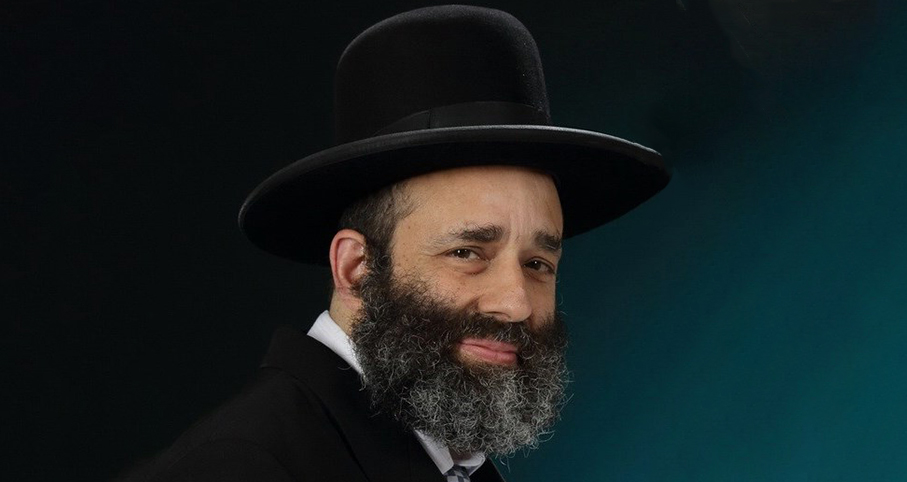- Sections
- Bemare Habazak - Rabbis Questions
725
Answer: It is indeed worthwhile for people with hundreds of Kaddeishim in front of them to learn more about different facets of Kaddish, but we will actually start with Shemoneh Esrei.
The gemara (Yoma 53b) says that the correct way to show respect to Hashem before Whom one was praying is to take three steps back at the end of Shemoneh Esrei, give Shalom while turning to the sides, and not return to one’s place right away. While it is unclear what text was used in the gemara’s time to "give Shalom," by the time of the Rishonim (see Mordechai, Berachot 111), it was clear that we employ some version of "Oseh shalom bimromav hu …" This is a request that Hashem bring peace to Israel as He brings peace between the different components of His heavenly abode. (The opening words come from the description of Hashem in Iyov 25:2).

Bemare Habazak - Rabbis Questions (594)
Rabbi Daniel Mann
597 - Ask the Rabbi: Shalom Zachar without the Baby and Parents
598 - Ask the Rabbi: Waiting to Return after Kaddish
599 - Ask the Rabbi: Possible Orla in Soap
Load More
The reason that Kaddish Titkabel may be different is that this Kaddish has a special kinship to Shemoneh Esrei. First, in content, the line that is unique to this Kaddish is the request that Hashem accept our prayers, and this usually refers to the Shemoneh Esrei and/or chazarat hashatz that the tzibbur recently recited. The connection finds expression in various halachot. For one, if Shemoneh Esrei/ chazarat hashatz began with a minyan that later dissipated, since they can finish up the units they began, they can recite the Kaddish Titkabel because it is the conclusion of chazarat hashatz (Rama, OC 55:3). Also, the Shulchan Aruch (OC 123:5, based on Terumat Hadeshen I:13) rules that a chazan does not need to take three steps back at the end of chazarat hashatz, because the steps at the end of Kaddish Titkabel count as the steps after chazarat hashatz (see Mishna Berura 123:18).
Now to your question. Rav Chaim Naeh (Sh’not Chaim 9:(47)) says that since Kaddish Titkabel is connected to chazarat hashatz, one should wait the amount of time it takes to walk four amot (2-3 seconds) before returning to his place (based on the model of the Rama, OC 123:2). Since there is apparently no one who explicitly disagrees, it is not surprising that contemporary sources, such as Ishei Yisrael (24:(152)) and Dirshu (124:21), cite and seem to accept him. However, he limits this requirement to Kaddish Titkabel (as opposed to Kaddish Yatom and D’Rabbanan, despite ending with Oseh shalom bimromav and even for those who take steps back). He also excludes Kaddish Titkabel of Ma’ariv (Mekor Chayim (Bachrach) to Rama, OC 123:2) disagrees) apparently because there is no chazarat hashatz to connect to and everyone took steps back after Shemoneh Esrei.
My strong impression is that few chazanim think about how long to wait before moving forward. (Kaddish reciters who are not chazanim may not even return to the place they started Kaddish). Possibly, many naturally wait close to the "required" time, but we still contend that the minhag is not to wait after any Kaddish. On the other hand, if you want to be machmir, this is not a problem, because presumably the tefilla would not be delayed by it. (We would not find it appropriate to follow the opinion (cited in Ishei Yisrael ibid.) that a Kaddish sayer should not say the ending Barchu until returning).

White and Nice Clothes and Gold on Yom Kippur
Rabbi Daniel Mann | Tishrei 4 5780

Ask the Rabbi: Indirect Responsibility for Theft
Rabbi Daniel Mann | Shevat 5785

Restrictions of Motzaei Tisha B’Av
Rabbi Daniel Mann | 5774

Question Behar
Rabbi Daniel Mann | 5772

Rabbi Daniel Mann

Reciting Borei Nefashot on Food When One Will Still Drink
Sivan 3 5780

Ribbit in a Loan from an Irrevocable Trust Fund
Adar 7 5777

Giving an Envelope on Shabbat to Use for Donations
5773

Calling a Kohen Who is a Katan
Av 22 5777

The Great Cottage Cheese Controversy
Rabbi Yirmiyohu Kaganoff | 5772

Personal Supplications on Shabbos and Yom Tov
Rabbi Yirmiyohu Kaganoff

Personal Supplications on Shabbos and Yom Tov
Rabbi Yirmiyohu Kaganoff
Days on Which Tachanun Is Not Recited
Chapter Twenty One-Part Three
Rabbi Eliezer Melamed | 5775

Refuting Criticism by the Ridbaz – #311 – part IV
Date and Place: 19 Sivan 5670 (1910), Yafo
Beit Din Eretz Hemda - Gazit | Nisan 5785
Daf Yomi Makkot Daf 11
R' Eli Stefansky | 21 Nisan 5785








